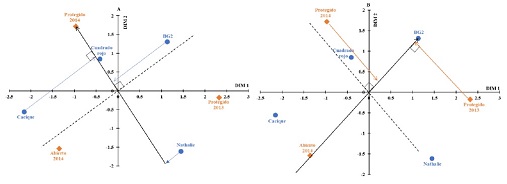Comportamiento agronómico de cultivares de pimentón (Capsicum annuum L.) cultivados en campo abierto y en condiciones protegidas
DOI:
https://doi.org/10.28940/terra.v40i0.1459Palabras clave:
adaptación, campo abierto, protegido con techo plástico, lamuyo, tipo cuadradoResumen
Los cultivares de pimentón (Capsicum annuum L.) cultivados en Colombia provienen de países con zonas templadas, lo que limita su producción en las condiciones climáticas y agroecológicas del país, al no alcanzar su adaptabilidad y potencial de rendimiento, debido a los factores que afectan la expresión de los genes. En Colombia el 95% del pimentón se siembra a campo abierto, sin embargo, los agricultores buscan alternativas para mejorar el rendimiento, como la agricultura protegida con techo plástico y ventilación natural. El objetivo de la investigación fue evaluar el comportamiento agronómico de cuatro cultivares de pimentón (BG2, Cuadrado rojo, Cacique y Nathalie) producidos en tres ambientes: campo abierto en el 2014 y protegido en dos ciclos (2013 y 2014). Los ensayos se establecieron en el Centro de Investigación La Selva (AGROSAVIA), Rionegro-Antioquia (Colombia), con experimentos multilocacionales en un diseño de bloques completos al azar. Se midieron las variables rendimiento, número, longitud y diámetro ecuatorial de frutos, clasif icándolos por categorías; también se determinó la incidencia de plagas y enfermedades. No se encontraron diferencias estadísticas signif icativas en el rendimiento obtenido en los tres ambientes evaluados. El efecto genético del cultivar fue más determinante que el efecto ambiente en las variables del rendimiento. Los cultivares más rendidores fueron Cacique y Nathalie, mientras que BG2 y Cuadrado rojo presentaron los mayores descartes de frutos en condiciones protegidas. La incidencia de plagas y enfermedades fue irregular, la mayor ocurrencia se presentó en condiciones protegidas, pero sin tener relación directa con los cultivares.
Descargas
Publication Facts
Reviewer profiles N/D
Author statements
- Academic society
- Terra Latinoamericana

















